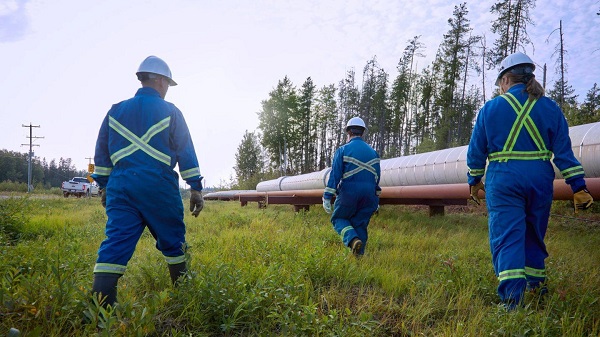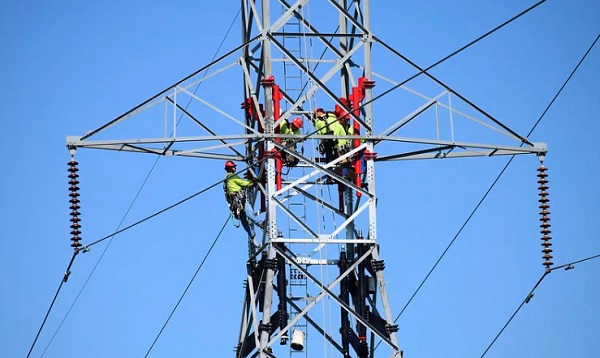Alberta
ASIRT releases findings on shooting death of armed murder suspect
From Alberta Serious Incident Response Team: RCMP acted reasonably in shooting fatality during arrest
On Jan. 7, 2017, ASIRT was directed to investigate the circumstances surrounding the death of a 27-year-old man during an attempted arrest by the RCMP that same day.
During a planned entry into a Stoney Nakoda First Nation residence to locate the man and two others suspected of involvement in a recent homicide, a confrontation occurred that resulted in the man being shot by an RCMP Emergency Response Team (ERT) officer.
ASIRT interviewed police and civilian witnesses, including the individuals present in the home that day and the involved officers. As well, the crime scene was examined, and photographs, radio communications and all available video were seized. ASIRT’s investigation is complete.
Having reviewed the investigation, executive director Susan Hughson, QC, concluded there were no reasonable grounds, nor reasonable suspicion, to believe a police officer committed a criminal offence.
On Jan. 7, 2017, RCMP executed several arrest warrants at residences on the Stoney Nakoda First Nation in search of three men, wanted for a murder that had occurred six days earlier. At the time, RCMP had information that the 27-year-old man had also been in possession of a firearm, which violated a court-ordered prohibition in effect until 2025. As such, the execution of the warrants was deemed to be high risk.
At approximately 4 p.m., ERT simultaneously sent teams to execute the warrants at two neighbouring homes, one being the home of the family of the 27-year-old man and his brother, also wanted in relation to the same homicide. The father of the men met the officers at the doorway to the residence. Officers located the brother inside on the first floor and arrested him without incident. As the officers proceeded further into the home, several other people were located and contained on the main level while others emerged from the basement. When asked whether anyone was still in the basement, the officers were told no.
A number of officers went down to clear the basement, announcing that they were police and that they had a warrant. As they moved along an interior wall towards a doorway in the basement, a man, later confirmed to have been the 27-year-old man, yelled at the officers to get out and leave him alone. A single shot was then fired from the opposite side of the wall, penetrating through drywall and narrowly missing the officers. The officers called out “shots fired”, returned to the main floor and, after throwing a tear gas canister into the basement, evacuated the residence.
At this point, officers were aware that they were dealing with an armed man and took up positions to contain the residence after everyone had been moved to safety. At this point, the RCMP would have had the benefit of time and resources.
One officer went towards the treeline on the west side of the residence to establish a rear sniper point. He positioned himself behind an old washing machine approximately 12 metres away from the house. While doing so, a gunshot was heard, believed to have come from the southwest corner of the basement near the basement window closest to the officer, and the officer reported hearing the sound of breaking glass.
Almost immediately, a woman climbed out of the window. As the officer yelled commands for her to walk towards him, the 27-year-old man emerged from the same basement window with a shotgun in his hands, carried at waist level and pointing in the direction of the officer and the young woman. The officer fired a single shot from his rifle, striking the 27-year-old man in the torso, causing him to collapse to the ground. Other ERT members moved in to secure the man and the shotgun, and to render emergency aid.
With the tear gas coming out of the basement window, RCMP moved the man and placed him on a jacket on the snow-covered ground to prevent hypothermia. The RCMP loaded the man into an RCMP vehicle and transported him to an ambulance waiting a short distance away, as the house and scene had not yet been cleared and confirmed safe by ERT officers. These officers re-entered the residence and found it empty.
The man was transported to a Calgary hospital where he was declared deceased. He sustained a single gunshot wound to the abdomen that injured internal organs and his spinal cord. More significantly, it cut through the main abdominal artery. This resulted in substantial hemorrhage and death. Toxicology was positive for methamphetamine.
The man’s gun, a 12-gauge tactical shotgun, was recovered loaded with three unfired shells. The pump action was in the forward firing position.
Section 25 of the Criminal Code states that a police officer is authorized to use as much force as is reasonably necessary in the execution of his or her duties. When necessary, an officer is entitled to resort to lethal force where there are, subjectively and objectively, grounds to believe that the person presents a risk of imminent bodily harm or death to the officer or another person. Lastly, an officer may use lethal force to prevent flight in limited circumstances.
The evidence is unequivocal that the 27-year-old man called out and fired upon the officers as they descended the stairs to clear the basement. The only other person in the basement was the unarmed woman who had exited the residence just ahead of the man. The woman confirmed that, although she did not see the events leading up to the officer-involved shooting, she immediately turned after the gunshot and saw officers approach the man and kick the shotgun away from the man as he laid on the ground.
Both objectively and subjectively, the man presented a risk of imminent grievous bodily harm or death to the officer, and potentially to the woman who would have been in the line of fire. The officer was lawfully placed and acting in the lawful execution of his duty. In the circumstances, the force used was both reasonable and authorized under the Criminal Code. There being no grounds to believe that an offence was committed by a police officer, no charges will be laid.
ASIRT’s mandate is to effectively, independently and objectively investigate incidents involving Alberta’s police that have resulted in serious injury or death to any person.
Alberta
‘Existing oil sands projects deliver some of the lowest-breakeven oil in North America’

From the Canadian Energy Centre
By Will Gibson
Alberta oil sands projects poised to grow on lower costs, strong reserves
As geopolitical uncertainty ripples through global energy markets, a new report says Alberta’s oil sands sector is positioned to grow thanks to its lower costs.
Enverus Intelligence Research’s annual Oil Sands Play Fundamentals forecasts producers will boost output by 400,000 barrels per day (bbls/d) by the end of this decade through expansions of current operations.
“Existing oil sands projects deliver some of the lowest-breakeven oil in North America at WTI prices lower than $50 U.S. dollars,” said Trevor Rix, a director with the Calgary-based research firm, a subsidiary of Enverus which is headquartered in Texas with operations in Europe and Asia.
Alberta’s oil sands currently produce about 3.4 million bbls/d. Individual companies have disclosed combined proven reserves of about 30 billion barrels, or more than 20 years of current production.
A recent sector-wide reserves analysis by McDaniel & Associates found the oil sands holds about 167 billion barrels of reserves, compared to about 20 billion barrels in Texas.
While trade tensions and sustained oil price declines may marginally slow oil sands growth in the short term, most projects have already had significant capital invested and can withstand some volatility.
“While it takes a large amount of out-of-pocket capital to start an oil sands operation, they are very cost effective after that initial investment,” said veteran S&P Global analyst Kevin Birn.
“Optimization,” where companies tweak existing operations for more efficient output, has dominated oil sands growth for the past eight years, he said. These efforts have also resulted in lower cost structures.
“That’s largely shielded the oil sands from some of the inflationary costs we’ve seen in other upstream production,” Birn said.
Added pipeline capacity through expansion of the Trans Mountain system and Enbridge’s Mainline have added an incentive to expand production, Rix said.
The increased production will also spur growth in regions of western Canada, including the Montney and Duvernay, which Enverus analysts previously highlighted as increasingly crucial to meet rising worldwide energy demand.
“Increased oil sands production will see demand increase for condensate, which is used as diluent to ship bitumen by pipeline, which has positive implications for growth in drilling in liquids-rich regions such as the Montney and Duvernay,” Rix said.
Alberta
It’s On! Alberta Challenging Liberals Unconstitutional and Destructive Net-Zero Legislation

“If Ottawa had it’s way Albertans would be left to freeze in the dark”
The ineffective federal net-zero electricity regulations will not reduce emissions or benefit Albertans but will increase costs and lead to supply shortages.
The risk of power outages during a hot summer or the depths of harsh winter cold snaps, are not unrealistic outcomes if these regulations are implemented. According to the Alberta Electric System Operator’s analysis, the regulations in question would make Alberta’s electricity system more than 100 times less reliable than the province’s supply adequacy standard. Albertans expect their electricity to remain affordable and reliable, but implementation of these regulations could increase costs by a staggering 35 per cent.
Canada’s constitution is clear. Provinces have exclusive jurisdiction over the development, conservation and management of sites and facilities in the province for the generation and production of electrical energy. That is why Alberta’s government is referring the constitutionality of the federal government’s recent net-zero electricity regulations to the Court of Appeal of Alberta.
“The federal government refused to work collaboratively or listen to Canadians while developing these regulations. The results are ineffective, unachievable and irresponsible, and place Albertans’ livelihoods – and more importantly, lives – at significant risk. Our government will not accept unconstitutional net-zero regulations that leave Albertans vulnerable to blackouts in the middle of summer and winter when they need electricity the most.”
“The introduction of the Clean Electricity Regulations in Alberta by the federal government is another example of dangerous federal overreach. These regulations will create unpredictable power outages in the months when Albertans need reliable energy the most. They will also cause power prices to soar in Alberta, which will hit our vulnerable the hardest.”
Finalized in December 2024, the federal electricity regulations impose strict carbon limits on fossil fuel power, in an attempt to force a net-zero grid, an unachievable target given current technology and infrastructure. The reliance on unproven technologies makes it almost impossible to operate natural gas plants without costly upgrades, threatening investment, grid reliability, and Alberta’s energy security.
“Ottawa’s electricity regulations will leave Albertans in the dark. They aren’t about reducing emissions – they are unconstitutional, ideological activist policies based on standards that can’t be met and technology that doesn’t exist. It will drive away investment and punish businesses, provinces and families for using natural gas for reliable, dispatchable power. We will not put families at risk from safety and affordability impacts – rationing power during the coldest days of the year – and we will continue to stand up for Albertans.”
“Albertans depend on electricity to provide for their families, power their businesses and pursue their dreams. The federal government’s Clean Electricity Regulations threaten both the affordability and reliability of our power grid, and we will not stand by as these regulations put the well-being of Albertans at risk.”
Related information
- Conference Board of Canada socio-economic Impacts of Canada’s 2030 Emissions Reduction Plan – (April 2025)
- Alberta Electric System Operator’s position on Canadian Energy Regulations
-

 Bjorn Lomborg2 days ago
Bjorn Lomborg2 days agoHow Canada Can Respond to Climate Change Smartly
-

 Automotive2 days ago
Automotive2 days agoNew federal government should pull the plug on Canada’s EV revolution
-

 Alberta2 days ago
Alberta2 days agoPreston Manning: Canada is in a unity crisis
-

 Business2 days ago
Business2 days agoNew federal government plans to run larger deficits and borrow more money than predecessor’s plan
-

 Business2 days ago
Business2 days agoScott Bessent says U.S., Ukraine “ready to sign” rare earths deal
-

 Mental Health2 days ago
Mental Health2 days agoHeadline that reads ‘Ontario must pay for surgery to give trans resident both penis and vagina: appeal court’ a sign of the times in Canada
-

 Business2 days ago
Business2 days agoChina’s economy takes a hit as factories experience sharp decline in orders following Trump tariffs
-

 Business1 day ago
Business1 day agoTrump’s bizarre 51st state comments and implied support for Carney were simply a ploy to blow up trilateral trade pact





